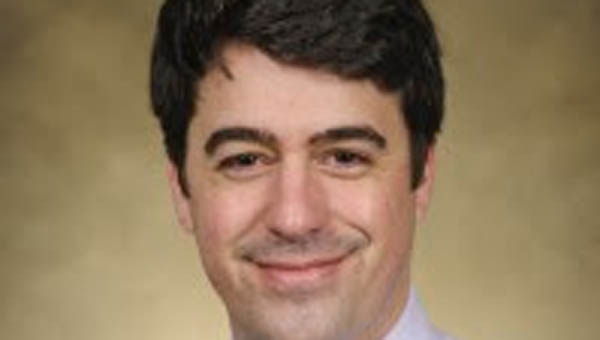Scott Parrott insists a lot of his success is due to luck.
Parrott came to The University of Alabama for a master’s degree in journalism after working as a reporter for eight years. He said he thought he wanted to teach, but he planned to continue reporting and teach part time.
He said he never really thought of becoming a full-time professor, but after working 14-hour days at a newspaper, he decided to see if he could get into a doctoral program.
He made a budget of how much he could spend on application fees and applied to multiple schools. With $35 left in his pocket, he attempted to get into the prestigious University of North Carolina at Chapel Hill, whose application happened to cost exactly $35. To his surprise, he was accepted.
“My research interest was actually fed by my old reporting career,” Parrott said. “I was doing investigative reports on mental healthcare in North Carolina. We did about 19 stories on mental healthcare in North Carolina, and essentially what the stories said is the system is failing. A lot of people were falling through the cracks.”
He said what hit home for him were the people he met who didn’t like to talk about their mental illness because of the stigma brought on by society. He decided to look into how media nurtured and mitigated these stereotypes.
After receiving his doctorate, he came back to The University of Alabama to teach as an adjunct professor in 2012 and was on the tenure track by 2013.
Parrot, a journalism professor at the University, now works with Kim Bissell at the UA Health Communication Research Lab. They meet together with three doctoral students once a week and discuss how media affects mental and physical health stereotypes. Parrott works with stigmas in mental illness, while Bissell looks at stigmas based on weight and body image.
Recently Parrott and fellow professor Chip Brantley received a grant from the Association for Education in Journalism and Mass Communication for the Feed Alabama course in which students document food insecurity in West Alabama. It is a year-long project offered in a fall and spring course.
“What we’re looking at and what we’re interested in is a lack of access to healthy food because of money, because of where you live – there could be many different factors,” Parrott said.
The Association for Education in Journalism and Mass Communication also awarded Parrott with the Nafziger-White-Salwen Dissertation Award for the top mass communication dissertation in the nation. He said he was relieved to get his dissertation – titled “An Examination of the Use of Disparagement Humor in Online TV Comedy Clips and the Role of Audience Reaction in its Effects” – completed, but he said the award was a huge honor.
“The dissertation process in general is the final hurdle of all your education,” Parrott said. “So it’s a huge challenge already, but to do work you enjoy and to have someone tell you you did a good job is fantastic.”
When approaching his teaching he said it is important to think like a student. He said being able to take on the perspective of someone else is important in teaching and in journalism.
“I try to put myself in the shoes of students, and think about the way they’re thinking, think about what they’re interested in, think about the challenges they’re encountering, the questions they have about their careers and what they want to do,” Parrott said.
Joseph Bodenbach, a senior majoring in journalism, said he has appreciated his time in Parrott’s classroom.
“I can’t think of a better teacher,” Bodenbach said. “He gave such a real point of view from his actual experience and taught you more than you could ever learn in a classroom setting.”
Casey Voyles is a senior majoring in political science and journalism and the president of the UA chapter of the Society for Professional Journalists, which Parrott advises with Chris Roberts.
“He’s always been really helpful with everything and open to new ideas,” Voyles said. “[He’s] willing to do something different. To let us stand out individually from anything else anyone has ever done here.”
She said it has been great watching Parrott’s transformation from being a teaching assistant in her journalism lab to being a full-time professor.
“I’ve seen him bring a new, fresh air to this school too,” Voyles said. “Just with his different viewpoints and his willingness to try different things and push the envelope, so to speak.”
Bodenbach said he took Parrott’s Dateline Alabama class.
“He set up the Dateline Alabama class like a real newsroom,” Bodenbach said. “He gave us a very real-life newsroom scenario.”
Voyles took the same course with Parrott.
“He gave us a lot of freedom but also a lot of responsibility, which is nice because that is what a real newsroom is going to be like,” Voyles said. “You have an editor you can talk to and get advice from, but at the same time they’re very hands-off. And so it forces you to take ownership of your own work and in the end we were more proud of what we had done because he let us do our own thing.”







